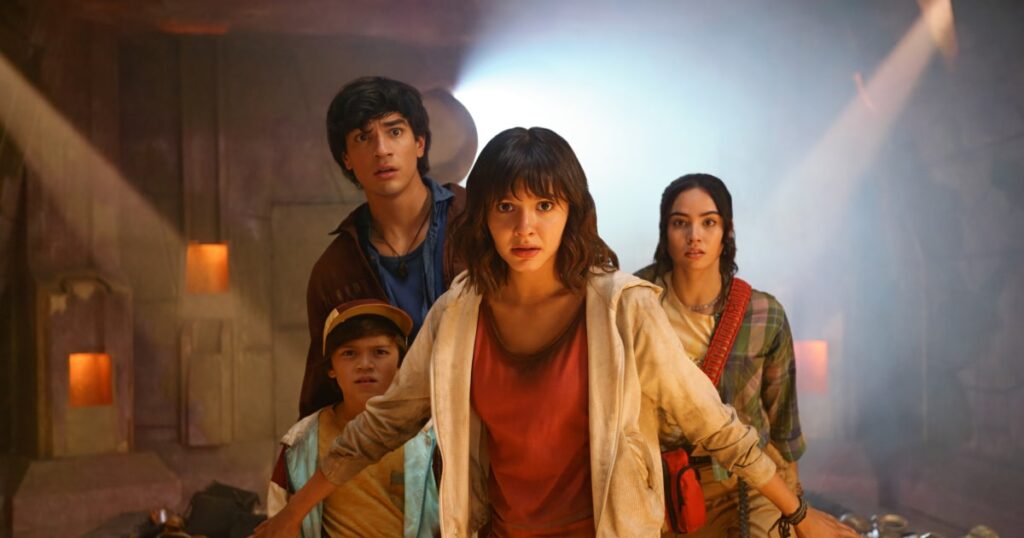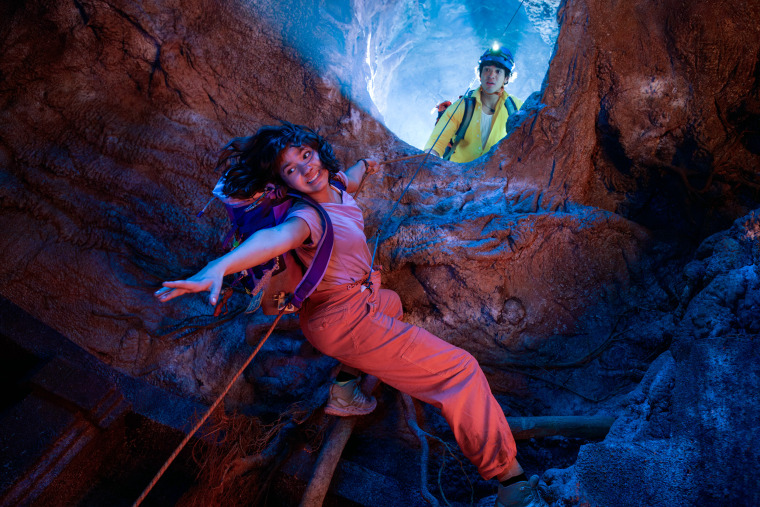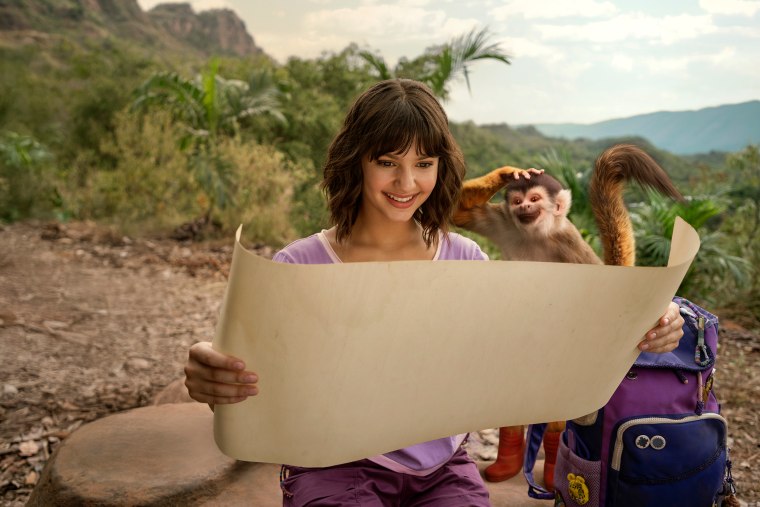
Millions of children in more than 150 countries have watched a 7-year-old Latina with her trademark purple backpack take friends on fun television adventures.
Now, Nickelodeon’s animated series “Dora the Explorer” is celebrating its 25th anniversary with a live-action movie, premiering on Nickelodeon and Paramount+ on Wednesday, ahead of the July 4 holiday weekend.
“Dora and the Search for Sol Dorado” tells the story of 16-year-old Dora (played by Samantha Lorraine) who is budding into a skilled treasure hunter.
The movie follows Dora and her friend Diego (Jacob Rodriguez) as they trek through a jungle to find an ancient treasure that could grant a magical wish.
This teenage version of Dora, Mexican director Alberto Belli says, is like Indiana Jones and Lara Croft, but with a spunky “lo hicimos” (“We did it”) attitude that makes her uniquely Latina.

But according to Belli, Dora is more interested in the adventure because it can help her figure out who she is and what other people are like.
Developing this larger sense of finding her place became a guiding theme for the movie.
“When you’re taking a cartoon character into a live action, you need to go a little bit deeper. So we tried to create some more problems,” Belli said in an interview, accompanied by actress Samantha Lorraine. “She (Dora) loses her bag, which is a spoiler, but it’s also in the trailer. So now she needs to find who she really is. And I think right now, more than ever, people feel a little lost.”
Dora’s backpack typically contains specific items, including a map, which she will need on her adventures. And Belli says that when “you don’t know exactly where you need to go,” you have to look inside yourself to figure it out.
Lorraine says that “Sol Dorado” (“Golden Sun”) is more about finding an internal space — “who you are as a person.”
“When she (Dora) finds Sol Dorado, to me, it was this full circle moment that we had finally finished this character arc,” the young actress said.
Many iconic action-adventure characters “usually go and explore someone else’s culture. They never explore their own culture,” Belli said. “What’s really exciting about Dora is she loves history. She’s exploring her own culture.”

The movie incorporates Indigenous Latino traditions that influence Dora’s identity.
One such tradition was based on “ayllu,” which is the Andean way of organizing communities to support each other through shared land, resources and responsibilities.
“When it comes to ayllu, friendship and connection is so important, and I think Dora is the epitome of that. She’s the connection through most cultures of the world,” Lorraine said, adding that “Dora the Explorer” has been translated into more than 30 languages.
Belli said that they had an expert on set to guide them through different Indigenous traditions, including quipus, which are knotted cords that were used by the Incas to record information.
They also had two consultants to work on pronunciation for when Dora had to speak in Quechua, which is an Indigenous language spoken by people in parts of Perú, Bolivia and Ecuador.
Lorraine, who identifies as Cuban American, says that playing Dora was a privilege because she offers many Latino children visibility.
“I kept thinking to myself, what do I want my little cousins to see when they watch this movie?,” she said.
Lorraine wants “Dora and the Search for Sol Dorado” to help viewers — regardless of their age — keep their sense of adventure and curiosity alive.
Dora has “always been part of pop culture,” Belli said, adding that he has a 5-year-old who’s a big fan.
“When I got the job, he got more excited than I did,” the director said with a laugh. “What I love about Dora is she’s a positive influence in people; she teaches you how to be positive, energetic and adventurous — and at the same time she teaches Spanish in a fun way, which I think is very cool.”
 Latest World Breaking News Online News Portal
Latest World Breaking News Online News Portal






